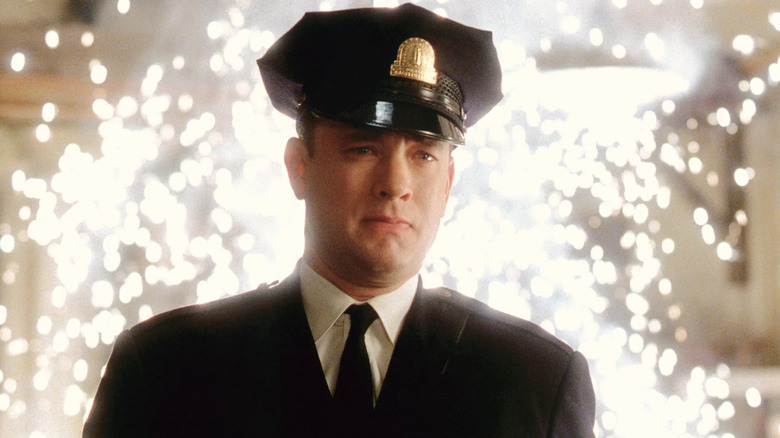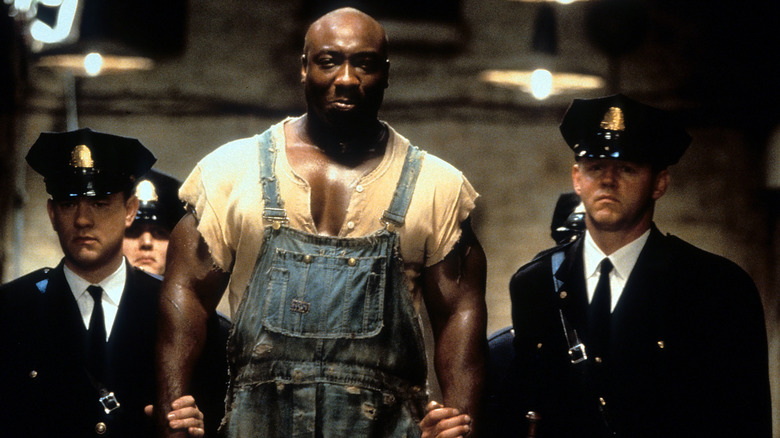Historical Accuracy Wasn't Tom Hanks' Concern When It Came To His Green Mile Costume
Stephen King may be a master of horror, but as stories like "The Body" (which later became "Stand By Me") and "The Green Mile" have shown, King is also a master of the heart. Adapted and directed by Frank Darabont ("The Shawshank Redemption," "The Walking Dead," "The Mist"), "The Green Mile" sees Tom Hanks as Paul Edgecomb, a death row prison guard during the Great Depression who bares witness to inexplicable events after a larger-than-life convict named John Coffey (Michael Clarke Duncan) arrives at his facility to serve his final days. The film was a commercial success at the box office and nabbed four Academy Award nominations, including Best Picture.
Although "The Green Mile" is a period piece, no one on the cast or crew would ever declare the film to be historically accurate. For starters, there's the whole "is John Coffey actually Jesus Christ?" question to be answered, but on a smaller scale, the costuming is intentionally inaccurate.
Entertainment Weekly interviewed Hanks back in 1999 in preparation for the film's release, where he admitted that the whole team had no problem bending the accuracy a bit, especially in terms of their wardrobe. "The reality is that they didn't wear uniforms on death row in 1935," Hanks said. "But Frank [Darabont] wanted them because it looked really cool, and I wanted them as an actor because it gave me this exoskeleton that was communicating some of the subtler aspects of the scenes." Given how prominently Hanks' uniformed image was in the marketing campaign of "The Green Mile," it's hard to imagine him without it.
The guard hats almost didn't make it
A crucial part of the uniforms that Hanks wanted to include had the potential to become a nightmare for production — the guard hats. Hanks told EW that there were countless discussions about the hats, with many concerned that they'd be a problem for the cinematographer.
"We had so many discussions about the hats. 'Are we gonna wear these hats?' 'Oh god, what are we going to do about the hats casting a shadow?' 'Can you wear them way back on your head?' But the hats were really important because when they're on, that means a guard is officially on duty. And when they're off, things are relaxed a little bit. They were this intangible signal to everybody of when they've got to shape up and fly right and when they don't."
Seeing Doug Hutchison's Percy Wetmore stripped of his uniform after he shoots William "Wild Bill" Wharton for the first time is a powerful moment, that would have been lessened had it not been for the uniformed look. Costume design is a vital part of the visual narrative, and while the wardrobe wasn't crafted with textbook precision in mind, it's clear that non-verbal storytelling was prioritized instead.

